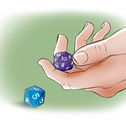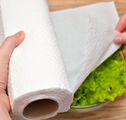How to Apply Molybdenum Disulfide
Four Methods:Burnishing/RubbingImpingement with a BinderAdding to PaintPhysical Vapor Deposition
|
This article needs to be converted to wikiHow format. You can help by editing it now and then removing this notice. Notice added on 2014-01-10. |
|
This article may benefit from a new introduction. You can help wikiHow by improving the current introduction, or writing a new one to match the format described in the Writer's Guide. Please remove this notice once this page has been improved. Notice added on: 2014-04-26. |
EditSteps
EditMethod 1 of 4: Burnishing/Rubbing
The word ‘burnish’ means to produce a glossy shine. Molybdenum disulphide is used as a powder in this method.
-
1Have a soft pad, fabric material, or a hard burnishing tool. This is used to apply the powder onto a surface.Ad
-
2Enclose the work area with protective sheets. This is to prevent any part of the powder from spreading beyond the work area.
-
3Lay the powder on the surface that needs to be burnished.
-
4Place the application pad onto the powder.
-
5Slowly apply pressure and at the same time, create a smooth sliding movement and spread the powder across the surface.
EditWarnings
- Do not create a very fast movement otherwise the powder spread will not be uniform. Also, it may spill and contaminate the outside area.
EditMethod 2 of 4: Impingement with a Binder
In this method, MoS2 is combined with another substance, creating a coating that can be easily applied. Boric acid is used here as an example because it is the most studied substance with MoS2.
-
1Pour the MoS2 lubricant onto the boric acid and mix them together to create fine slurry.
-
2Using a paint brush, apply the coating in clean and easy strokes.
-
3Make sure that the coating is evenly applied on the surface.
EditMethod 3 of 4: Adding to Paint
This method is where MoS2 is mixed as an additive with a paint-like substance. The advantage is that MoS2 has no curing time and can be used once it is properly mixed with the substance.
-
1Add MoS2 to the paint.
-
2Mix well, allowing the two components ]to combine and form a solid lubricant.
-
3Make sure that the spray area is clean and devoid of any dust. Enclose spraying area in protective sheeting to avoid spreading.
-
4Spray the solid lubricant onto the desired surface.
EditMethod 4 of 4: Physical Vapor Deposition
This is an important technique as it allows for the chemical substance to become a vapor and create an even coating onto the substrate. For this method, you need a bell jar with diffusion rotary pumps and a computer. The bell jar has a sample holder for the MoS2 lubricant, a guide to keep the lubricant from overspreading, and a substrate holder.
-
1Remove the bell jar cover.
-
2Using a small spatula, take the MoS2 lubricant and place it in the sample holder.
-
3Place the required substrate onto the substrate holder.
-
4Replace the bell jar cover and lower the pressure within the jar using the diffusion rotary pumps.
-
5Define the temperature at which you want the MoS2 lubricant to evaporate and the amount of time you require to stability, using a computer. #Begin the process to lower the pressure using the computer. Once the pressure is lowered, the temperature will begin to rise, converting the lubricant into vapor form, which then rises and forms an even coating on the substrate. With the right technique you can manufacture strong durable products using MoS2.Ad
EditSources and Citations
Article Info
Categories: Format | Summarization | Pages with broken file links
Recent edits by: Serendipitee, Teresa, Amanda420
Thanks to all authors for creating a page that has been read 681 times.








